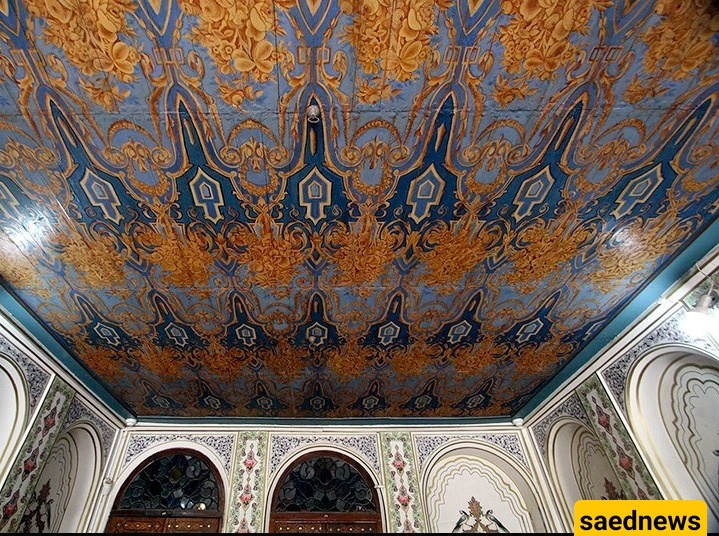SAEDNEWS: Mirror work is the art of creating regular forms by using small or large pieces of mirror mosaics, and is used as a decoration in internal architectural spaces.

Mirror works not only enhance the decorative appeal of architecture but also illuminate spaces by multiplying reflections of light. Considered one of Iran’s last major innovations in architecture and interior decoration, mirror work has deep historical roots. Discoveries of glass artifacts from the Parthian and Sassanid dynasties suggest that glass craftsmanship has been practiced in Iran for centuries.
In Iranian culture, mirrors and water symbolize purity, fortune, honesty, and light. The use of mirrors in architecture likely draws on these symbolic meanings. Mirror work gained widespread popularity in the 19th century. Fine mirror vases imported from Germany were cut into mosaics of desired shapes and incorporated into Iranian designs.

Initially, large, single-panel mirrors were installed in buildings. A notable example is Isfahan’s Chehel Sotoun Palace, where a massive mirror above one entrance reflected the passing people in its entirety. Over time, mirror pieces became smaller and more intricate.
By the late 19th century, mirrors were commonly cut into small triangles, diamonds, or hexagons. Iranian architects also used convex glass turned into mirrors. During the Qajar dynasty, a new architectural style emerged, inspired in part by Safavid trends but also influenced by Western art during the reign of Naser al-Din Shah. Architecture and applied arts—including stucco, mirror work, and mosaics—experienced significant development. Mirror work was especially prominent in royal buildings and shrines.
Mirror artistry flourished in Qajar Iran, with intricate designs in Muqarnas, arabesque patterns, and even painted and calligraphic motifs on mirrors. The Mirror Hall of Golestan Palace and Shams-Ol-Emarat stand as two iconic examples of this dazzling art form. Today, Shiraz, Isfahan, and Tehran remain the primary centers of Iranian mirror work, continuing a centuries-old tradition of shimmering beauty.



